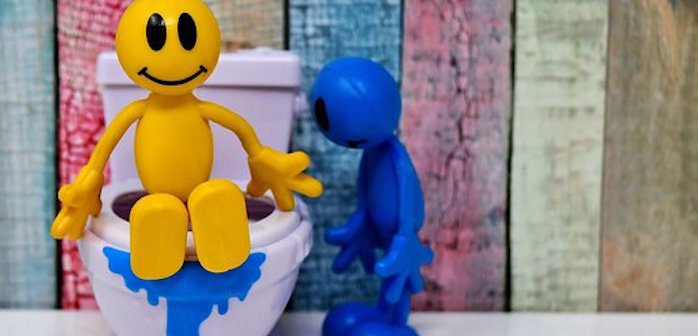Admittedly, I have already begun to think about my little one ditching the diapers for a big-kid toilet. At 10 months old, my baby is nowhere near this transition, but it doesn’t hurt to be prepared. For those of you who do have kids about to make this trickier than most milestone, we have some tips to help turn what can be a total nightmare into your child’s blissful acceptance of his or her mini throne.
Before we get into it, keep in mind that every child’s potty training journey is different. Don’t let yourself be put under unnecessary pressure because your neighbor’s sister happened to get her set of twins potty trained simultaneously in three days. All jokes aside, being told something alike or seeing similar-aged children start their potty training should not be the reason your kid does too. Go with the flow and when your child is ready, use the following for a smooth and enjoyable potty training experience.
When should my child start potty training?
Well for the love of God, don’t start thinking about it as early as I have! Most children are ready to begin potty training between 18-24 months. During this stage children begin to stop reflexively emptying their bladder and bowels and start to show signs that they can voluntarily wait to ‘go’. These include:
– Being able to stay dry for two hours or more. Waking from a nap or sleep dry
– Mimicking adult toilet behavior or showing interest in going to the restroom
– Showing awareness that they are “going” to the toilet. For example, hiding behind furniture or going to a different room to pee or poop
– Being uncomfortable in diapers. For example, trying to pull at or take off a soiled diaper
– Developing motor skills needed for potty training. For example, being able to walk quickly to the bathroom; being capable of undressing themselves; and being able to get on and off the potty without difficulty
Don’t force it
As mentioned earlier, the number one rule of potty training is not to force it. Your child will begin to show signs of being ready for potty training when he or she is exactly that – ready. Pushing or forcing this development on your little one can cause toddler regression (when a child’s physical and cognitive development appears to be going backwards). No one wants to be walking around the home cleaning up pools of pee or piles of poop! To avoid this, wait until your toddler is ready and introduce the concept of potty training so your little one will know what to expect while aiming not to pressure them into this transition.
Prepare your child
There are significant habits you can introduce to your child to help them form basic toilet etiquette in preparation for potty training. For example, get your little one to wash their hands with you after each diaper change, train them to sit on the potty, and teach them how to pull up and down their bottoms in preparation to “go” to the toilet. This will all come in handy down the line.
Implement a routine
When it’s finally time to start potty training, implement a simple daily routine for your little one to follow. You can start with having your child sit on the potty fully clothed to get used to the feel and habit of it. Then depending on your family’s schedule, you could start with having your child sit on the potty every two hours, regardless of whether they need to go or not. This could be first thing in the morning, before naps and bedtime and before leaving the house and other locations, like restaurants.
Run through each step: start with removing their bottoms, sitting on the potty, and flushing and washing hands. Do this consistently, whether or not they have had a “successful” session or not. Consistency is key.
Have plenty of patience
Patience and effort is required from both children and parents when potty training begins. Do not be disheartened after failed attempts; keep calm and positive so that your little one is not deterred from trying again until they get it right. Review your potty training routine if you notice little progress being made, and practice the steps your child might be missing out. If and when needed, take a break and resume in a few days or weeks.
Make it fun
Again this is for both the parent and the child. You don’t want to feel like it’s a chore to support your child through this important milestone, and you certainly don’t want a disgruntled toddler refusing to go potty because it’s just no fun or rewarding. Think outside the box and make tinkle time a mini-adventure. Think of a bathroom jingle, help your child decorate their potty throne, or reward your child with stickers for example for a job well done or even an awesome attempt! Kids will slowly but surely view going potty as a more fun than going in their diapers.
This can be used for the preparation period of potty training. Make your little one a part of the process by letting them pick out their potty training tools – the potty, relevant books, music for when they’re on the potty, training pants, underwear, and more.
Offer praise and small rewards
I don’t know about you, but incentives still work for me at my ripe age. Be strategic in helping to motivate and reinforce the positive behaviors you wish to see. Candy always works, however sweet treats may not suit your parenting style, so go with what works for you – be it their favorite healthy snack, an age-appropriate TV show of their choice for post-potty viewing, or extra story time before naps or at bedtime. Hold out on golden-ticket prizes until your child is fully potty trained, and of course don’t forget to pile on the praise! Children respond very well to encouragement.
Photo: Pixabay




